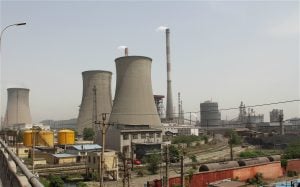In the days before the Paris conference on climate change, it seems apparent that in common with the Copenhagen summit of 2009, this event, too, will stoke up anxiety but yield no meaningful solutions to stopping climate change. This will happen in spite of the volte face that larger developing countries have made in the intervening years. These countries went to Copenhagen determined to defend their rights under the Kyoto Protocol because, as they rightly argued, they were being asked to forego, or at least limit, their development to help solve a problem they did not create.
Today, all of these developing countries have made hefty commitments to reduce their greenhouse gas (GHG) emissions in advance of the conference. China has offered to reduce its emissions per unit of GDP by 60% to 65% below 1990 levels and cap total emissions at that level in 2030. India has offered to reduce its emissions by 30% to 35% and Indonesia by 29% below current levels by 2030.
There is a major catch, however. While the OECD (Organisation for Economic Co-operation and Development) countries are committing themselves to making cuts in their total emissions, developing countries, with the exception of Brazil, are promising only to reduce the ‘carbon intensity’ of their GDP growth.
In clear terms, this means that if China clocks average growth per year of 6%, and India of 7% per year in the next 15 years, their total GHG emissions will rise by another 50% and 65%, respectively. Other developing countries will show similar increases depending upon their rates of growth. Thus, even if every country meets its commitments, annual GHG emissions are likely to rise by one third or more in the next decade-and-a-half. At that point, we will be so close to the ‘tipping point’ that there will be little we can do. Except pray.
The cause of the impending failure at Paris is the same as at Copenhagen: the bedrock belief that there are no alternative sources of energy to replace fossil fuels. This is not, of course, what our governments say. An estimated 1,199 new coal-fired power plants, with four times the present coal-based generating capacity of the US, are being planned or constructed globally, according to the World Resources Institute. This betrays what governments really believe.
If the high coal scenario comes to pass, the Paris summit would therefore be judged as a failure, ensuring that rich countries will focus more of their attention on the use of coal in developing countries.
But if Paris was to take a bold move to enshrine ambitious cuts in carbon, there would be dozens of suitably mature low carbon energy technologies that could make the world largely free of fossil fuels in as little as four decades, according to some estimates.
Two of the most important types of technologies would be to harnessing solar energy to produce electricity (concentrated solar power or CSP), and thermochemical conversion of biomass into transport fuels and petrochemicals, via gasification, into any form of transport fuel one desires.
Solar thermal
Large solar thermal power plants have yet to be set up in India, but a calculation based on the technical specifications of Spain’s Gemasolar CSP plant shows that despite India’s prohibitively high interest rates, this technology, if set up in the Rajasthan desert, would be able to provide power at about the same cost.
Biofuels, meanwhile, could play a big role in fueling commercial aircraft, and curbing the emissions of jet fuel, which is a major, and largely unregulated, source of climate changing gases.
In 2012, British Airways signed an 11-year power purchase agreement (PPA) with US-based Solena Fuels to buy at market prices aviation fuel produced from London’s garbage using this process. That project is expected to start producing aviation and diesel fuel in 2017. Three other airlines – Qantas, SAS and Lufthansa – have also signed memoranda of intent with Solena.
Biofuels
Producing transport fuels from biomass involves two chemical processes: gasification to produce carbon monoxide and hydrogen and their synthesis, using various catalysts at different temperatures and pressures.
BA’s readiness to sign the PPA at market prices shows that the Solena process will not need subsidies. This is also true of both solar thermal and photovoltaic panels, which are already competitive with coal-fired power in most parts of the world. An auction of the PPA for a 500 MW solar power plant in the Indian state of Andhra Pradesh was won by the US-based SunEdison at Rs 4.63 – under 7 US cents a unit.
Another critically important advantage of these two technologies is the ease with which they slip into the world’s existing energy infrastructure. Unlike PV, solar thermal power stations require the same super-critical steam turbines that modern coal-based plants use. Transport fuels produced from biomass through the Fischer-Tropsch method enjoy a similar advantage over first generation bio-fuels, such as ethanol and palm-diesel oil, because they can be produced from a much wider range of crop and industrial wastes.
Retiring coal and levying carbon taxes
Producing biofuels via gasification will, therefore, at one stroke double, or even treble, the productivity of agro-based industries. This will correspondingly increase farm incomes, and in developing countries it will, to a large degree, mitigate the impact of drought. That’s because when farmers lose their food crop, they will still have immensely valuable crop residues to sell to the biofuel industry.
These two technologies can make the low-carbon transition from coal to low-carbon energy painless. Around 70% of the coal-fired power plants in the US, and half or more in other countries, are more than 30 years-old and will come to the end of their natural lives in the next 10 to 15 years.
A modest tax on carbon, say – specifically coal, oil and natural gas – is all that the world will need to finance and speed up the transition.






